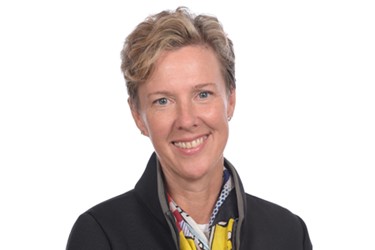ARM's Lambert Recaps 2019 Cell And Gene Investor Day

A conversation with Janet Lambert, CEO of ARM

ARM’s 2019 Cell and Gene Investor Day took place on March 21st in New York, NY. Now in its seventh year, Investor Day provides insight into financing opportunities for cell and gene therapy-based treatment and tools. I caught up with ARM’s CEO and Cell & Gene Editorial Advisory Board member, Janet Lambert, after the event to discuss top takeaways, near-term financing opportunities, and more.
Harris: List and explain the top takeaways from ARM’s 2019 Cell and Gene Therapy Investor Day.
Lambert: Investment and interest in regenerative medicine is growing. 2019 was a landmark year for investment in regenerative medicine overall and across technology types, outpacing even 2015, which had previously been the high point for investment in this space. Sustained investor interest going forward was highlighted in the meeting, as was the growing interest of large pharma companies in partnering with or acquiring companies’ active cell and gene therapy.
Cell and gene therapies will be developed to treat an increasing number of patients. Thus far, commercial gene and gene-modified cell therapies have focused on some rare orphan indications and, in the case of cell-based immune-oncology treatments, hematological malignancies. While this trend may continue in the short run, we are already seeing an increasing number of therapies for diseases with larger patient populations — including cardiovascular indications, diabetes, and solid tumors — coming to the clinic, and it’s likely that we will see products aimed at these diseases begin to enter the market within the next few years.
Addressing manufacturing challenges is key. One of the major themes throughout all the panels during the Investor Day was the need to address manufacturing challenges, which will become particularly important as industry enters larger clinical trials and as additional products come to market for indications with larger patient populations. Many companies are looking to address this with a combination of in-house and outsourced approaches. The process of developing internationally harmonized CMC standards that recognize the unique aspects of these therapies will also be an important part of this process.
Harris: Explain the financing opportunities and hypotheses discussed at the event and how they might shape the sector in the near-term.
Lambert: Cell and gene therapies have the potential to radically transform healthcare by providing durable therapeutic effects, potentially through a single administration. However, the high upfront costs of these products can be difficult for current payment systems to absorb. In order to ensure patients can access these life-changing treatments, it is important for stakeholders to develop innovative payment models which can address the value these products can provide. These models include annuities, which allow insurers to developers over time, as well as pay-for-performance models. Many developers are already in conversations with public and private payers about how these and other innovative payment models can be implemented.
Harris: Explain the major topic as well as the important, yet, perhaps understated topic to come out of the event.
Lambert: The regenerative medicine sector has matured considerably over the past few years. With several cell and gene therapies already on the market in several countries, and numerous additional approvals expected in the next 2 to 3 years, stakeholders across the sector — including therapeutic developers, investors, payers, and policymakers — have a good understanding of what the remaining challenges are. There is a lot of interest right now in addressing those challenges, particularly regarding financing and manufacturing, but doing so is going to require innovative thinking on all sides of the equation. People recognize that and given the value that these therapies have and as well as the immense potential to help patients suffering from a wide variety of serious diseases, there’s a lot of willingness across the field to engage with these challenges directly and develop the necessary solutions.
